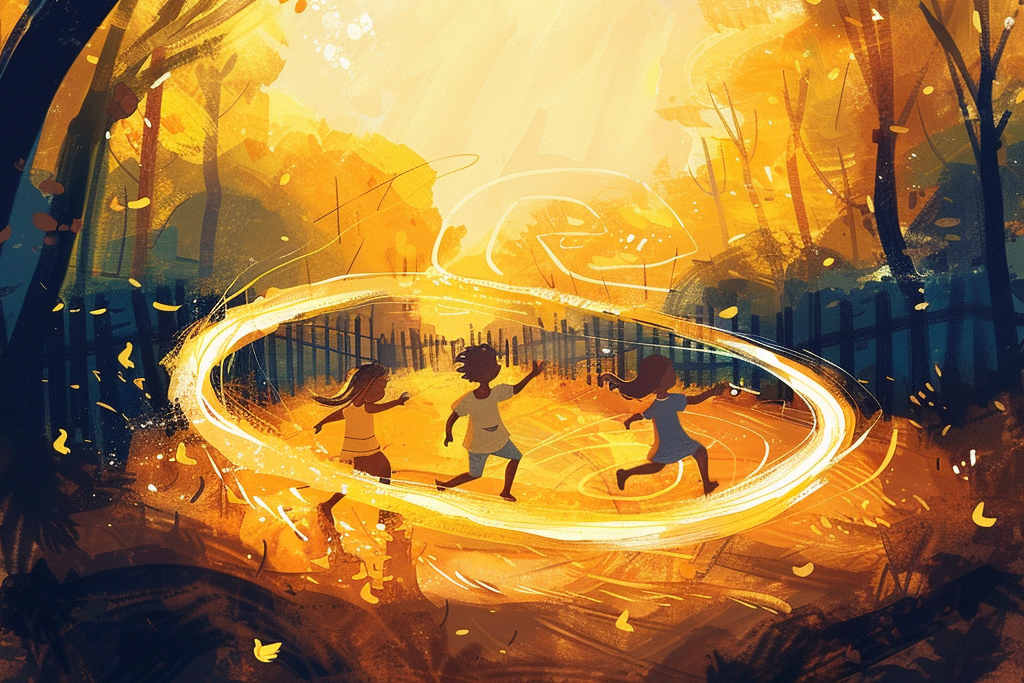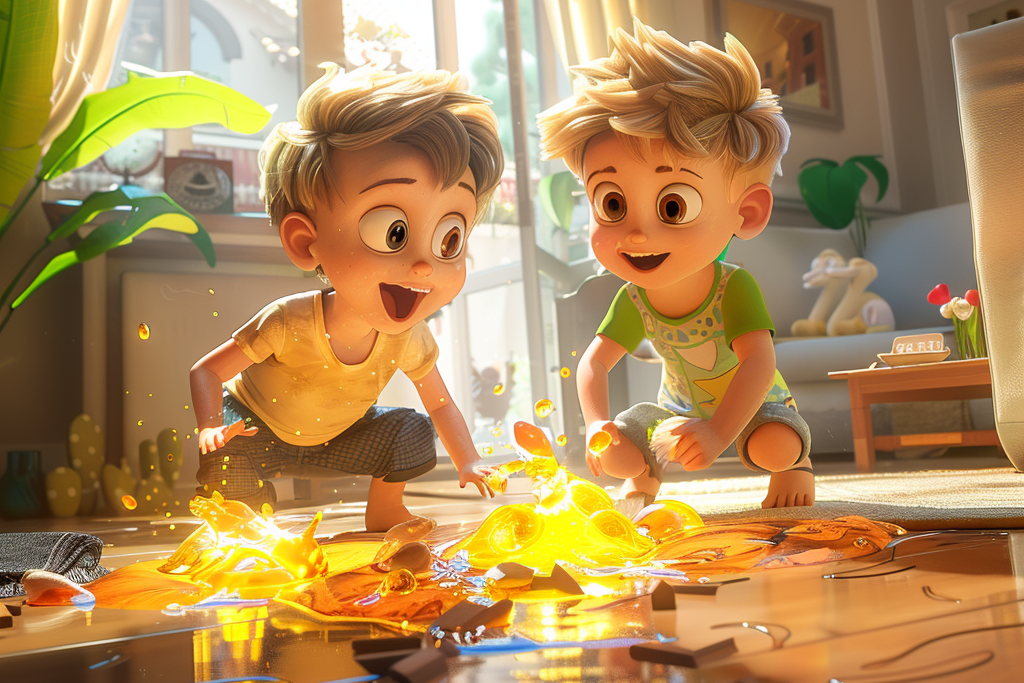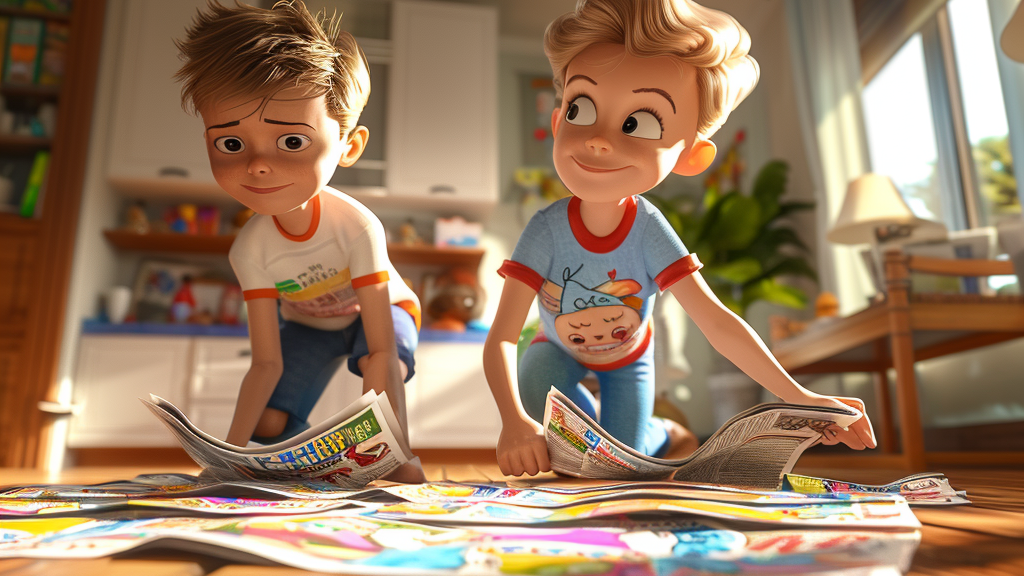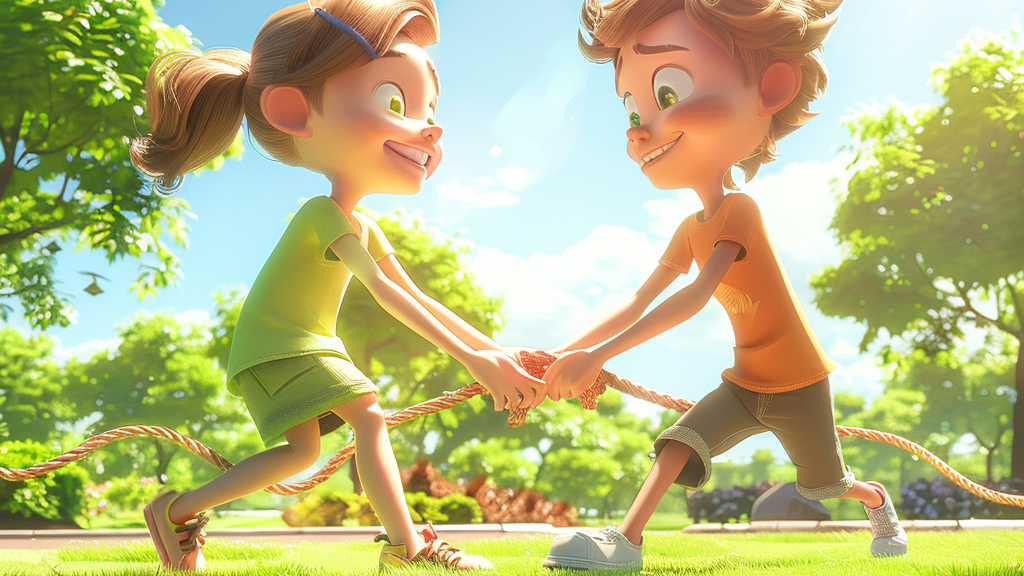Relay games for kids are not just about running and having fun; they’re a fantastic way to teach essential life skills. These games can take place almost anywhere, indoors or outdoors, with or without props. As your child participates in relay races, they’ll learn how to be a team player, communicate effectively, and strategize to win—all while staying active and fit.
In the text that follows, you’ll discover a variety of exciting relay games designed to engage children and foster creativity. From classic races like leapfrog and human tunnel to innovative games that incorporate props, there’s something for every group size and setting. These activities not only keep kids entertained but also help them learn to use their strengths and support their teammates’ weaknesses. Dive in to explore how relay games can be a fun and educational experience for your child, promoting a diverse set of skills and knowledge.
Key Takeaways
- Relay games for kids are a fun and effective way to teach essential life skills such as teamwork, communication, and strategy while promoting physical fitness.
- These games can be adapted for various environments, whether indoors or outdoors, and require minimal resources, making them accessible and engaging for all children.
- Participating in relay games helps children enhance social skills, including taking turns, following instructions, and respecting teammates, fostering an inclusive atmosphere.
- From traditional races to creative variations utilizing props, relay games offer diverse options that cater to different group sizes and encourage creativity and problem-solving.
- Organizing successful relay events involves careful planning, ensuring safety, and promoting sportsmanship, providing an enjoyable and learning-rich experience for all participants.
Table of Contents
Benefits of Relay Games for Kids
Relay games for kids offer a multitude of benefits that extend beyond simple entertainment. They incorporate physical activity, enhance teamwork, and develop various skills essential for children’s growth.

Physical Development
Relay games often involve activities such as running, jumping, and hopping that significantly improve cardiovascular health and overall physical fitness. Games like the “Sack Race,” “Hula Hoop Relay,” and “Crab Walk Relay” are excellent examples. Coordination and flexibility see enhancement through activities like the “Bear Crawl Relay” and “Leapfrog Relay,” promoting balance and agility.
Teamwork and Social Skills
Relay games promote teamwork and collaboration among children by encouraging them to work together towards a shared goal. These activities build communication, trust, and mutual support, as seen in games like the “Hula Hoop Relay,” “Tunnel Relay,” and “Dress-Up Relay.” They also foster social skills such as taking turns, following instructions, and respecting teammates, making them valuable for social development.
Educational Experience
Relay games present a practical learning experience, teaching children to strategize and solve problems. They learn valuable lessons, such as accepting defeat graciously and using their strengths to their advantage. This helps prepare them for diverse situations and encourages creativity, equipping them with a diverse set of skills and knowledge.
Setting Up Relay Games
Planning effective relay games enhances the experience for children by ensuring they’re safe and engaging while emphasizing teamwork and coordination.
Choosing the Right Space
Selecting an appropriate space for your relay games is essential for both safety and enjoyment. Outdoor areas like fields or large playgrounds offer ample room for running and a natural setting that encourages physical activity. If you’re indoors, gymnasiums or large halls provide a controlled environment protected from weather conditions. Ensure the surface is level and free from debris to prevent injuries. Adequate space accommodates the long sprints typical in relay games and provides enough room for team interactions.
Resources and Materials Needed
Prepare the necessary resources to facilitate exciting and organized games. Basic relay races require minimal items, often just incorporating a start and finish line. For more creative variations, consider incorporating items like cones, hoops, or ropes to create obstacles or checkpoints within the course. Certain games might need additional sports equipment like soccer balls or basketballs if the activity includes specific tasks. Always have safety gear available, such as cones to mark boundaries and safe zones, especially in areas with potential hazards.
Classic Relay Games
Embark on a journey filled with laughter, coordination, and teamwork with these classic relay games for kids. Each game promotes fun and skill development through structured play.

Egg-and-Spoon Race
What You Need
- Spoons, one per player
- Eggs, real or plastic, one per team
How to Set Up
Form two teams. Distribute a spoon to each player and assign one egg per team. Create a starting line and a turnaround point.
How to Play
Players balance the egg on the spoon, moving from start to turnaround and back. If the egg drops, return to start and retry. Pass the spoon to the next teammate upon completion. The team with all players back first wins.
Three-Legged Race
What You Need
- Ropes or cloth strips to tie legs
How to Set Up
Pair players, tying one’s left leg to the other’s right leg. Line up pairs at the start.
How to Play
Pairs race to the finish line coordinating steps. The first pair to reach the line wins. Encourage pairs to practice short distances before starting.
Sack Race
What You Need
- Sacks or pillowcases, one per player
How to Set Up
Provide each player with a sack. Establish a starting point and a return line.
How to Play
Players hop in sacks from start to return point and back. Hand the sack to the next player in line. The first team to complete wins.
Rabbit Race
What You Need
- No items needed
How to Set Up
Create lines for team members to stand behind and a designated turn-around point.
How to Play
Players squat and hop like rabbits to and from the turnaround point. Upon returning, the next player repeats. Teams with all players back first win.
Musical Chairs
What You Need
- Chairs, one less than the number of players
- Music source
How to Set Up
Arrange chairs in a circle, seats facing outward. Ensure ample space around chairs.
How to Play
Players walk around chairs when the music starts. When the music stops, they find a chair to sit. The player without a chair is out. Remove a chair and repeat. The last person seated wins.
Freeze Dance
What You Need
- Music source
How to Set Up
Clear a space for dancing without obstructions.
How to Play
Play music and let kids dance freely. When it stops, they must freeze. Anyone moving is out. Continue until one remains.
Over, Under Race
What You Need
- Ball, one per team
How to Set Up
Form teams in lines. The first person holds the ball.
How to Play
The first player passes the ball over their head to the next, who passes it under their legs to the next, continuing this pattern. The last in line runs to the front and starts again. Repeat until the initial person is at the front once more.
Creative Relay Games
Discover an array of creative relay games perfect for kids. These activities not only generate fun but also nurture teamwork, strategy, and physical fitness.

Shoebox Slide
What You Need
- Shoe boxes
- Cones or markers
How to Set Up
Place cones or markers about 15 feet apart to create a start and finish line for each team. Assign two shoe boxes to each team.
How to Play
Each child places their feet into the shoe boxes, sliding rather than stepping. Players move to the finish line and back to pass the boxes to the next teammate. The first team to complete the relay wins.
The Floor is Lava
What You Need
- Chairs, benches, or stepping stones
- Open space for an obstacle course
How to Set Up
Arrange chairs or benches around the space, ensuring an overall path with gaps representing “lava.”
How to Play
Kids use the objects to cross the area without touching the floor. If a child falls off or touches the “lava,” they start over. The first team to traverse the course finishes the relay.
Dress-Up Relay
What You Need
- Dress-up clothes: oversized shirts, hats, scarves, and sunglasses
How to Set Up
Divide teams with a short distance between two lines of players. Place a set of dress-up clothes at the starting point.
How to Play
The first player dresses up, runs to the other line, undresses, and hands off items to their teammate. The game continues until everyone on the team has had a turn.
Hula-Hoop Pass
What You Need
- Hula hoop for each team
How to Set Up
Teams form circles, holding hands with one hula hoop within their joined arms.
How to Play
Kids pass the hula hoop around the circle without breaking handholds. The first team to pass it around wins.
Water Balloon Toss
What You Need
- Water balloons
- Open outdoor area
How to Set Up
Create a start and finish line about 10 feet apart. Provide each pair of players with a water balloon.
How to Play
Pairs toss the balloon while advancing to the finish line. Dropped balloons mean a restart for that round. A team finishes when all pairs reach the line successfully.
The Worm Race
What You Need
- Large open area with a flat surface
How to Set Up
Define start and finish lines using cones or markers 20 feet apart.
How to Play
Kids wriggle across the field without using their legs or arms. The first team with all members crossing the finish line wins.
Pretend to Be a Waiter
What You Need
- Plastic or paper plates
- Small balls or bean bags
How to Set Up
Set up a course with a start and finish line. Provide each player with a plate and a small ball.
How to Play
Players balance the ball on the plate while navigating the course. If it drops, they return to the start. Once complete, the player hands off to the next teammate. The first team done with all members completes the relay.
Indoor Relay Games
Indoor relay games offer fun and engaging ways for kids to work together and develop skills. These activities are perfect for rainy days or when outdoor space is limited. Below are detailed descriptions of some exciting indoor relay games.

Newspaper Relay
What You Need
- Two sheets of newspaper per team
How to Set Up
- Divide students into relay teams.
- Provide each team with two sheets of newspaper.
How to Play
Team members take turns placing the sheets on the ground, stepping on them to move forward, and retrieving the sheets to continue. The first team to have all members cross the relay space wins.
Beanbag Balance
What You Need
- Small exercise bean bags
How to Set Up
- Split children into relay teams.
- Supply each team with a bean bag.
How to Play
Participants balance bean bags on their heads, elbows, or feet as they move to the next team member. The team completing the race first wins.
Paper Punching Bag
What You Need
- Paper bags
- Small, lightweight balls or crumpled paper
How to Set Up
- Arrange paper bags securely in a straight line.
- Mark a starting point a few feet away.
How to Play
Children stand at the line and throw balls into the bags. The team with the most successful tosses wins.
Obstacle Relay
What You Need
- Cones, ropes, or chairs
How to Set Up
- Design an indoor obstacle course using the cones, ropes, or chairs.
- Ensure the course is safe and clear of debris.
How to Play
Kids navigate through the obstacles and tag their teammates. The first team finishing the course wins.
Put the Penny
What You Need
- Pennies
- Spoons
How to Set Up
- Create a start and finish line.
- Give each participant a spoon and a penny.
How to Play
Players carry a penny on a spoon from start to finish. If the penny falls, they must return to the start. The first team to finish wins.
Keep the Balloon in The Air
What You Need
- Balloons
How to Set Up
- Provide each team with a balloon.
How to Play
Participants keep the balloon in the air while racing to the finish line without touching the ground. The first to succeed wins the relay.
Paper Airplane Relay Race
What You Need
- Paper
- A designated target area
How to Set Up
- Designate a target area for each team.
How to Play
Kids fold paper airplanes and throw them toward the target. The team with the most accurate throws wins.
Memory Game Relay
What You Need
- Matching cards or objects
How to Set Up
- Prepare pairs of cards or objects.
- Scatter them at the end of the relay space.
How to Play
Participants race to the scattered cards, attempt to find matches, and return to tag the next teammate. The team with the most matches wins.
Outdoor Relay Games
Outdoor relay games offer children a chance to enjoy fresh air while engaging in team-based fun. Each game encourages physical exertion, strategic thinking, and laughter. Here are some popular options and their instructions.

Just Simply Run
What You Need
- Open field or large outdoor space
- Markers for start and finish lines
How to Set Up
Create a clear start and finish line using cones, tape, or any visible markers. Ensure the running area is free from obstacles.
How to Play
Divide the participants into teams. Players from each team take turns sprinting from the start line to the finish line and back. The first team to have all members complete the run wins.
Wheelbarrow Race
What You Need
- Grass or soft surface
- Partner for each participant
How to Set Up
Mark a starting line and a turning point. Pair up the children and have them stand at the starting line in their pairs.
How to Play
One partner acts as the wheelbarrow by walking on their hands while the other holds their legs. Upon reaching the turning point, partners switch roles. The first pair to finish wins.
Crab Walk Relay
What You Need
- Flat, safe surface
How to Set Up
Designate a starting and a turnaround point. Familiarize the children with the crab walk technique by having them practice moving sideways on hands and feet.
How to Play
Teams race by crab walking to the turnaround point and back. The team that finishes with all members completing the task first wins.
Mix-It-Up Relay Race
What You Need
- Various props like hula hoops, cones, and jump ropes
How to Set Up
Arrange the props in a row, with significant space between each item. Ensure all props are safely positioned.
How to Play
Players race from the start line to the end, completing a task at each prop (e.g., hula hooping, jumping over cones). The team that completes all tasks first wins.
Pass the Torch
What You Need
- Baton or lightweight item to pass
- Open space
How to Set Up
Establish a start and finish line. Line up team members behind the start line.
How to Play
Each player takes turns running with the baton to the next team member, passing it before reaching the finish line. The first team to finish wins.
Fake Pony Ride Race
What You Need
- Stick or toy horse for each participant
- Open space
How to Set Up
Create a racing track with a start and finish line. Ensure the area is safe for running.
How to Play
Riders mount their stick ponies and race from the start to the finish line while pretending to ride a pony. The first player to cross the finish line wins.
Fill the Water Bucket Race
What You Need
- Two buckets per team (one empty, one filled with water)
- Cups for hauling water
How to Set Up
Place a filled bucket at one end and an empty bucket at the opposite end of the course.
How to Play
Players transport water using cups, attempting to fill the empty bucket. The team with the most water in the bucket after a set time wins.
Rock, Paper, Scissors Race
What You Need
- Open outdoor space
- Two teams of participants
How to Set Up
Have teams line up with a designated duel area at a midway point between start and finish.
How to Play
Runners race to the midway point, play rock, paper, scissors with the opposing team member, and continue back to tag the next runner upon a win. The first team to run successfully wins.
Tips for Organizing Successful Relay Events
Planning a relay event for kids doesn’t have to be overwhelming. Focus on a few key strategies: preparation, team building, and safety.
Preparation
Gather all necessary supplies before the event starts. Items like batons, cones, and markers are essential to set up the racecourse. Additionally, measure the space to ensure it’s appropriate for the number of participants and the type of race.
Team Building
Divide the kids into equal teams to maintain fairness. Encourage them to embrace sportsmanship and teamwork by clearly explaining the rules. Consider incorporating themes or costumes, adding extra excitement to the event.
Safety
Ensure the racecourse is clear of obstacles and safe for all participants. Set up cones to mark start and finish lines and define the pathways for races like “Ball Roll Relay.” Confirm the area is spacious enough to prevent collisions.






